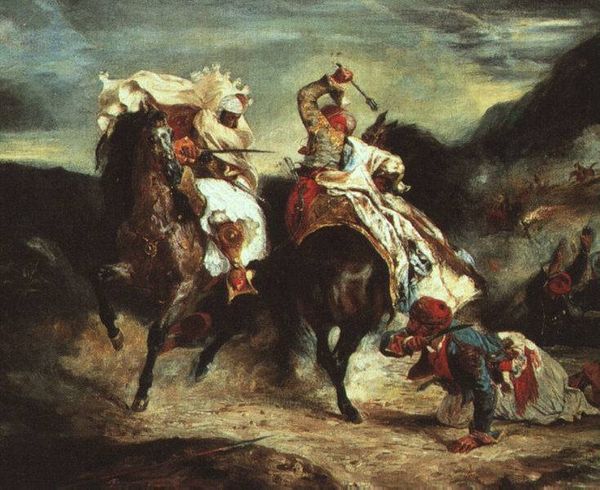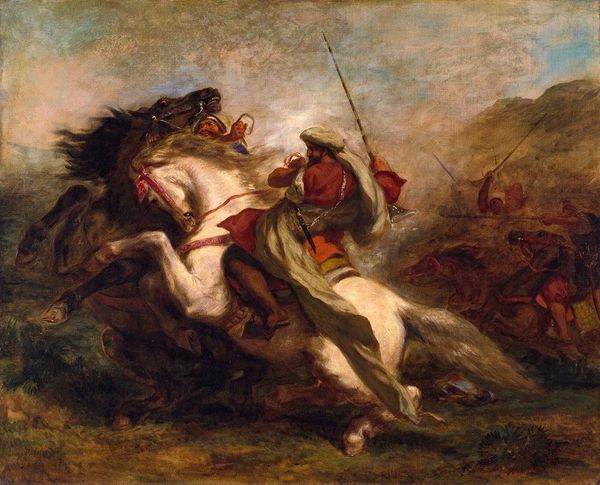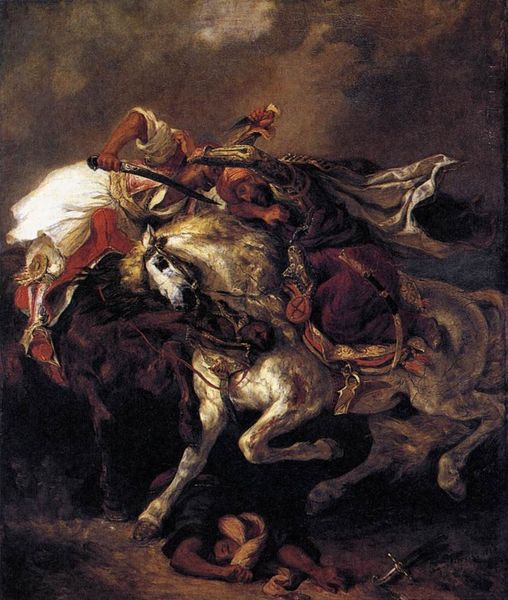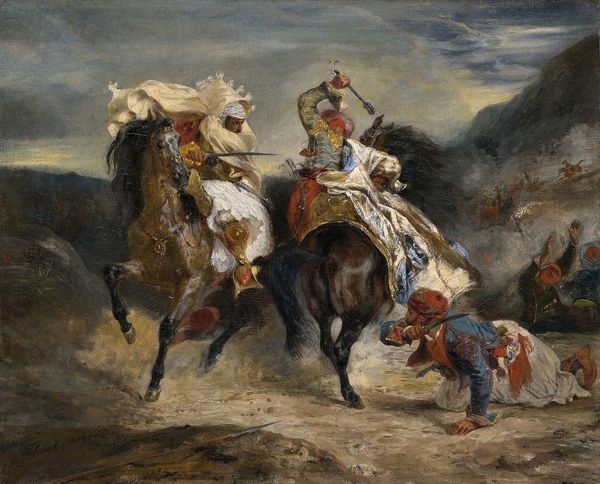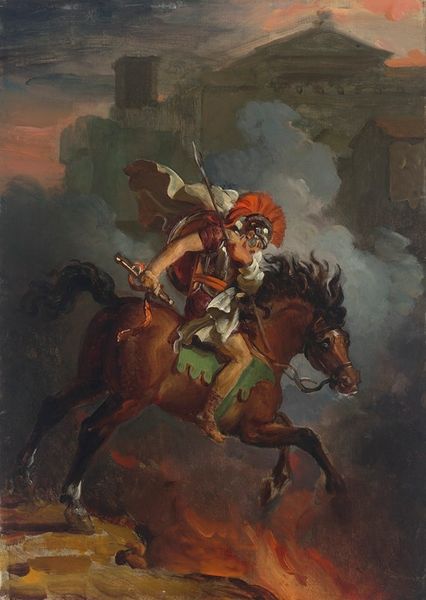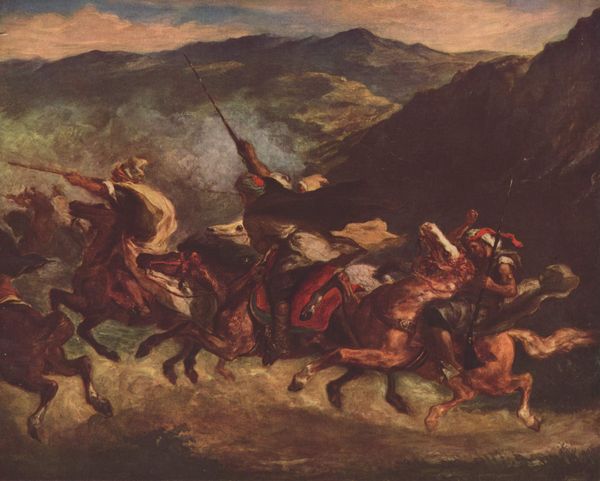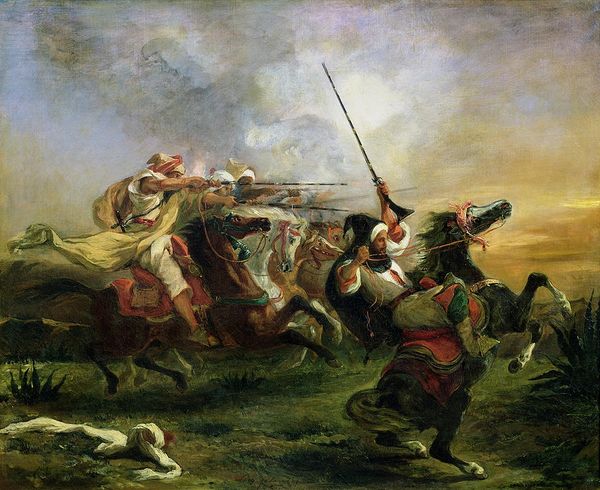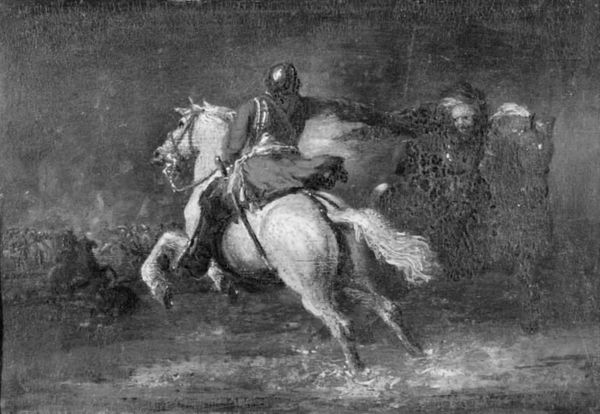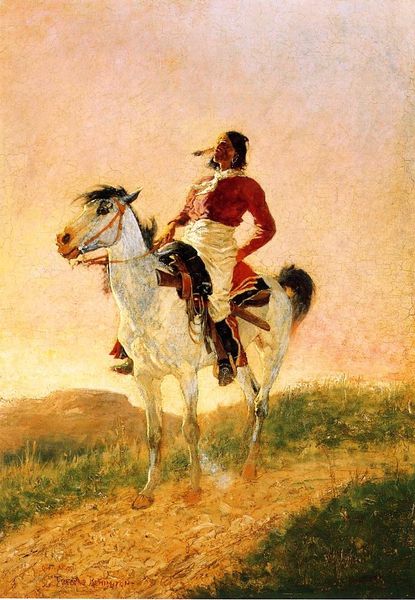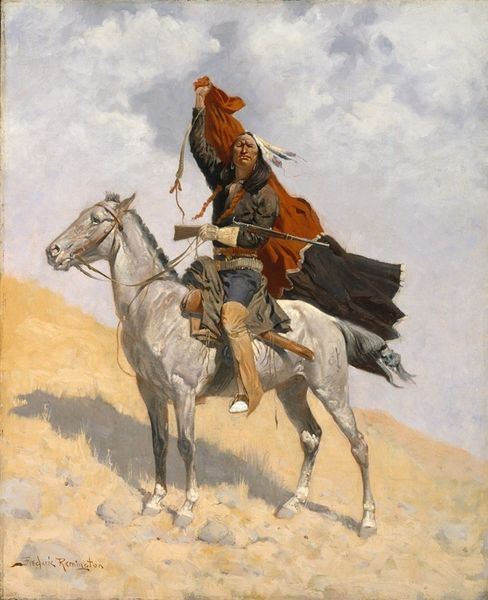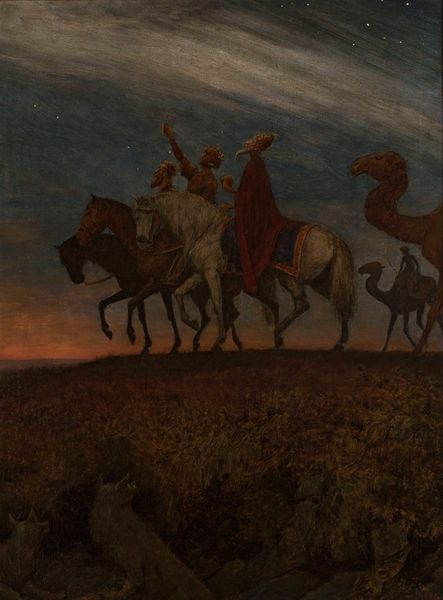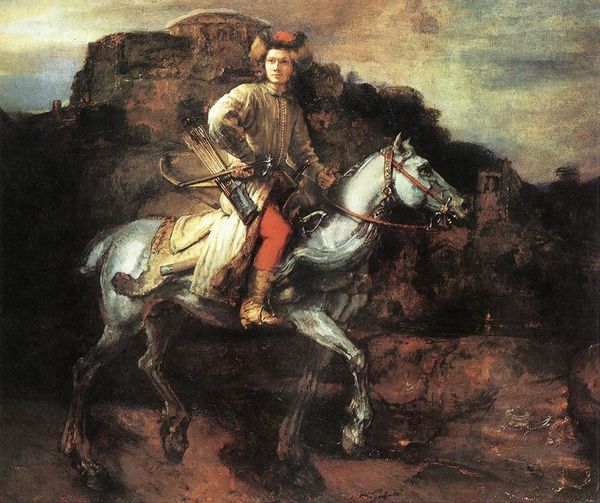
Copyright: Public domain
Editor: Károly Lotz’s "Galloping Outlaw," painted in 1857, looks like an oil painting to me. The scene bursts with action and the outlaw’s intensity. I find it captivating, almost theatrical, the way the horses strain and their muscles ripple. How do you interpret this work through its materials and methods? Curator: It's important to understand how Lotz used oil paint to achieve this dynamism. Look at the brushstrokes: they’re loose, almost frantic, aren’t they? What does this suggest to you about the *labor* involved in creating this sense of urgency? Also, observe the pigments. Are these colors locally sourced or imported? How would that choice affect the value or perception of the work? Editor: That’s a great question! Thinking about local versus imported pigment connects the artwork to the broader economy, the consumption, and the act of creating the art. The frenzy seems almost manufactured... is there a connection between labor, the perception of the subject, and the consumption of "Romantic" stories? Curator: Exactly! Consider how the mass production and consumption of Romantic imagery at this time influenced Lotz's choices. Is he celebrating the outlaw or critiquing the system that romanticizes such figures? What are the implications of mass production and a “Romantic” ideal? Editor: I see, he is portraying something more than just "the thrill of the chase" from Romanticism. Thinking about the materials used and how readily Romantic imagery was consumed gives it another level of context, showing the social dynamics of that time. Curator: Precisely. By focusing on the materials and means of production, we gain a deeper understanding of not just the image, but the socio-economic context in which it was created and consumed. The 'Romance' can hide real issues.
Comments
No comments
Be the first to comment and join the conversation on the ultimate creative platform.
